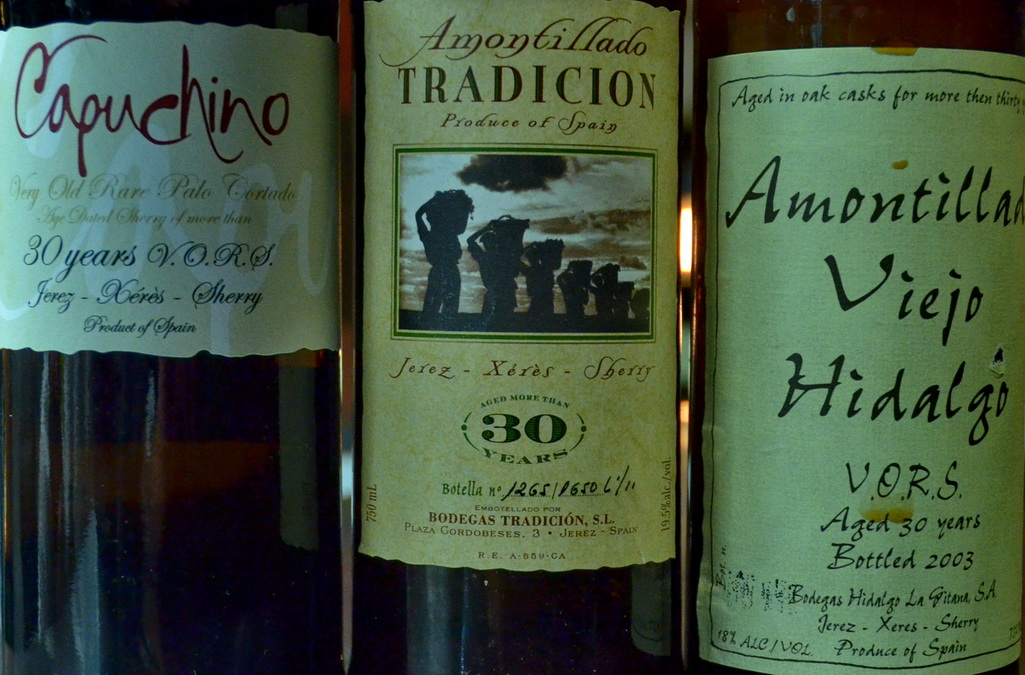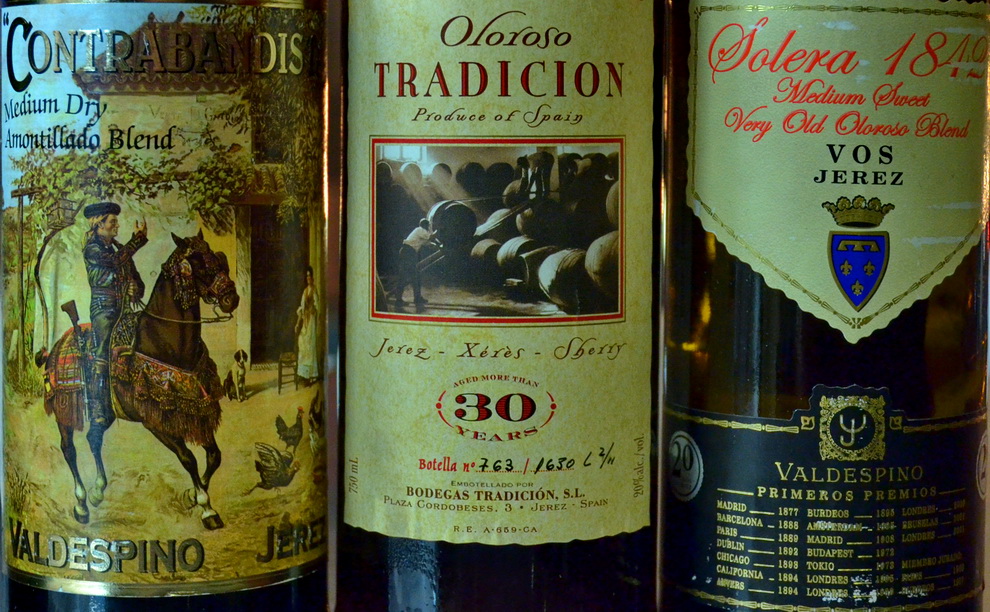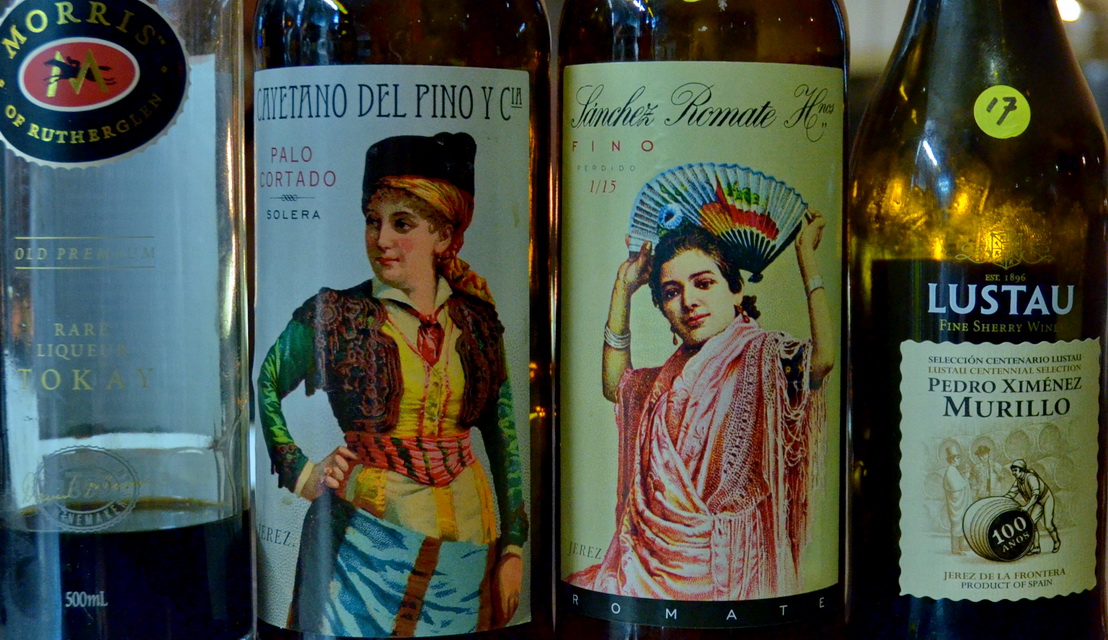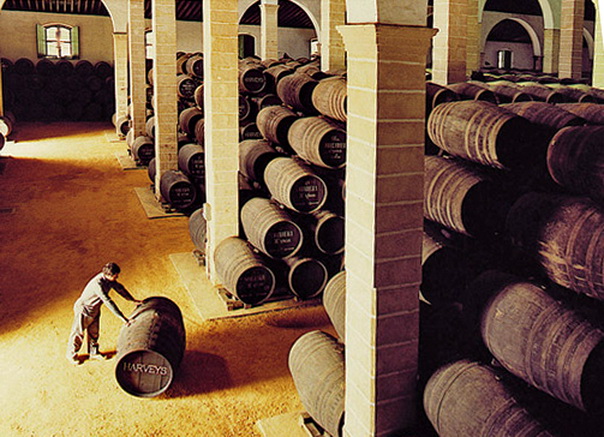A once-in-a-lifetime experience
Once sherry was the most popular wine in Australia, though it was sweet and simple most of the time. The wines we were treated to last night were nothing like that. For one, they were Spanish. For another, they were mostly dry. They were also wonderful wines of breathtaking quality.
I’ve hinted a few times before that I belong to a group of old wine lovers who meet every few months for dinner with a few special bottles. The sherry dinner was Ray’s idea. Ray is a man of great charm, enormous generosity and a cellar full of the most interesting wines. He accumulated a lot of old sherries over the years, hand wanted to share some of them with the rest of us. That’s how this idea came about. It was a first for me, and will probably be a last as well.
Ray arranged a degustation dinner for us at Fix St James, a wine bar and restaurant in downtown Sydney. The boys in the kitchen did a great job matching the courses to the sherries Ray had selected. I resent reading other wine lovers detailed accounts of special wine dinners, so I’m not going to bore the socks off you with a blow-by-blow account of this one. Instead, we’ll talk a little bit about Sherry and then pick out a few of these wines to talk about.
 From left to right: Fino, Amontillado and Oloroso
From left to right: Fino, Amontillado and Oloroso
Fino and Manzanilla sherries tend to be light in colour and bone-dry. Their savoury, yeasty taste comes from the blanket of flor yeast that grows on the surface of the wines during barrel aging. The yeast occurs naturally in the wineries around Jerez and protects this style of sherry from oxidizing. When the flor yeast dies off because it’s consumed all available nutrients, the sherry is either bottled as a Fino or left in cask and allowed to age and gently oxidize. Wines in this transitory state are known as Palo Cortado.
Amontillado sherries are darker and older and have more flavour than Finos, often showing a nutty character. Oloroso is the next stage, and the wines are darker and richer again. They’re often dry but sometimes sweetened by the addition of some Pedro Ximines or Moscatel (most sherries are made from the Palomino variety), which brings the style closer to our Muscats and Tokays down under. The really old sweet Olorosos are also called black sherries.
Some of the Wines
 The Osborne Palo Cortado ‘Capuchino’ above is a VORS, which means at least 30 years old. This would be the average age since most sherries are blends of older and newer material in the traditional ‘solera’ system of stacking the butts or barrels. The solera this wine came from dates back to 1790, when George Washington was president of the United States of America.
The Osborne Palo Cortado ‘Capuchino’ above is a VORS, which means at least 30 years old. This would be the average age since most sherries are blends of older and newer material in the traditional ‘solera’ system of stacking the butts or barrels. The solera this wine came from dates back to 1790, when George Washington was president of the United States of America.
The Bodegas Tradicion Amontillado is a relatively new label, but its creators bought old parcels of sherries to create this beauty with an average age of 40 years. The Hidalgo Amontillado Viejo VORS comes from a house that once supplied the French army when Napoleon was Emperor. These sherries are wonderful examples of the VORS Amontillado style, rich, savoury and nutty but bone dry. We had these with an interesting dish of bone marrow, beets and molasses.
The Oloroso sherries just added more weight, flavour and gently oxidised complexity. Oloroso means fragrant, perfumed. Wonderful with the duck breast, ginger and grains.
 And finally, the richest Olorosos to go with the cheeses and dessert. The Lusteau was made entirely from Pedro Ximines, which is pretty rare, and it was pretty sweet and almost treacle-like. The old Morris Old Premium Rare Rutherglen Liqueur Tokay was a touch sweeter but not as complex as the the Lusteau.
And finally, the richest Olorosos to go with the cheeses and dessert. The Lusteau was made entirely from Pedro Ximines, which is pretty rare, and it was pretty sweet and almost treacle-like. The old Morris Old Premium Rare Rutherglen Liqueur Tokay was a touch sweeter but not as complex as the the Lusteau.
 I suspect that most of these sherries cannot be bought anywhere except perhaps the auction market overseas. However, we’ve long made some brilliant sherries down under and a few of these are still around.
I suspect that most of these sherries cannot be bought anywhere except perhaps the auction market overseas. However, we’ve long made some brilliant sherries down under and a few of these are still around.
Seppeltsfield DP116 Aged Flor 500mL – $25 at Dan M’s.
Seppeltsfield Oloroso DP38 NV 500ml – $30 at MyCellars
Grab either of these old treasures while the winter lasts. They may look expensive but they’re serious bargains.
Kim

